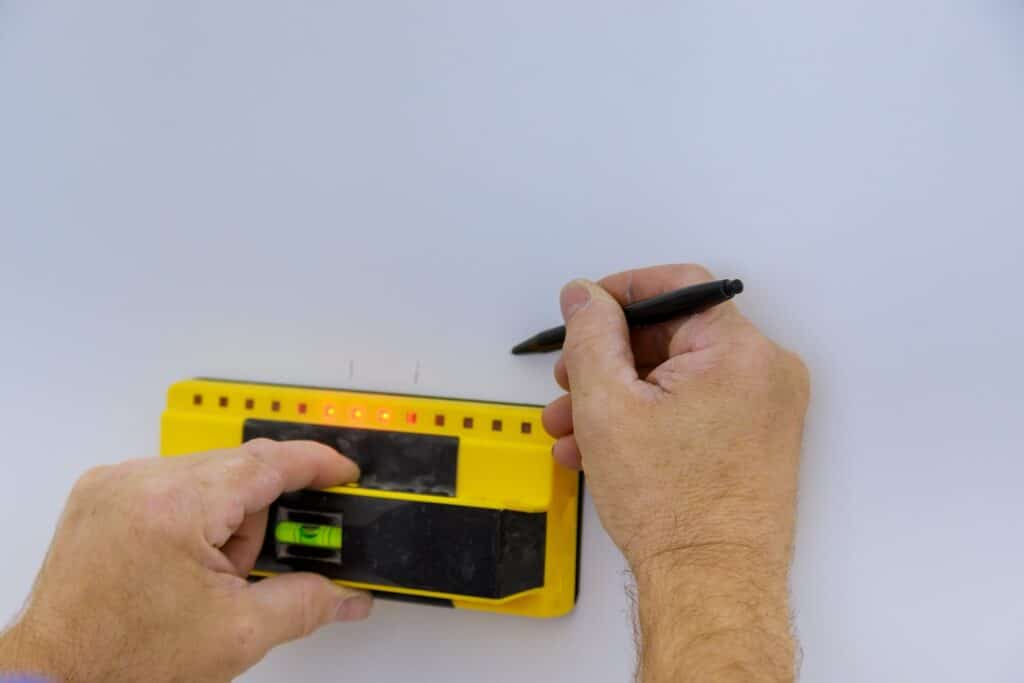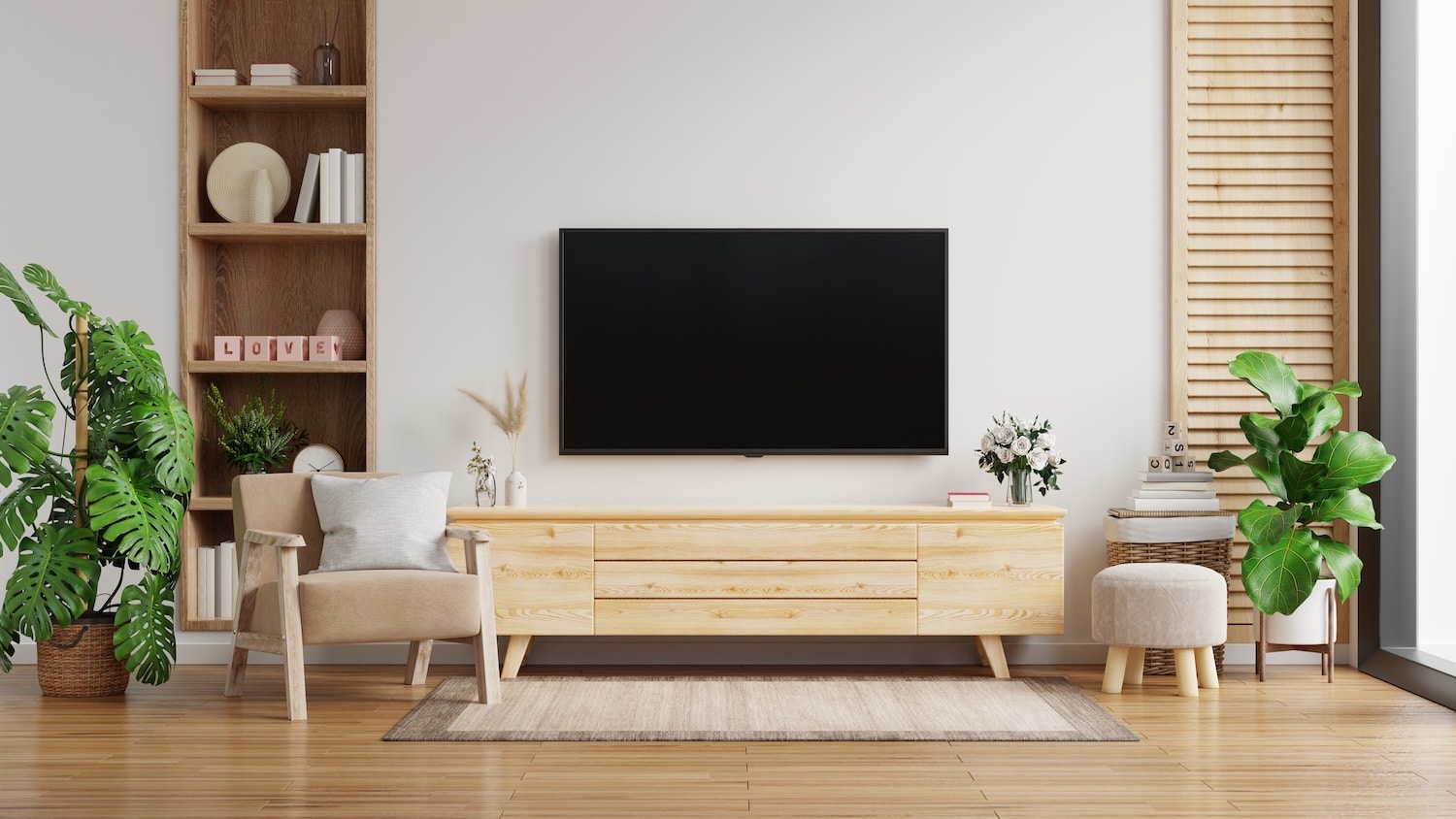Mounting your TV on the wall and hiding the cables can instantly make your living room look cleaner and more modern. But doing it the wrong way? That can lead to crooked screens, damaged drywall, or even fire hazards.
At Tier 1 Pro Inspections, we’ve seen what happens behind the walls. And trust us, there’s more going on in there than most homeowners realize. If you’re planning to mount your TV and run cables through the wall, here’s what not to do.
Table of Contents
Toggle1) Don’t Skip Stud-Finding or Use the Wrong Anchors
It might seem like a no-brainer, but one of the most common mistakes is failing to mount the TV into studs. Drywall alone won’t hold the weight of your TV—especially over time. Even light TVs can pull anchors out of the wall if they’re not secured properly.
What to do instead:
Use a stud finder and a pencil to spot and mark the studs so you’re sure to anchor directly to them. If your wall doesn’t line up with your TV mount holes, use a mounting plate or rail that can span across two studs. Avoid plastic wall plugs or basic drywall anchors—they’re not made for this kind of load. Finally, make sure the wall anchor you’re using is capable of holding the TV you’re hanging. Most will be clearly labeled with their weight capacity!
2) Never Run Power Cables Behind Drywall Without a Plan
Here’s a big one: you can’t just snake your regular power cords through the wall. Not only is it unsafe—it’s also against electrical code in many areas. Standard TV power cables aren’t rated to be used behind drywall. If they overheat, it can spark a fire.
Safer alternatives include:
- In-wall rated power extension kits
- Power bridge systems that include outlet-to-outlet connections
- Hiring a licensed electrician to install an outlet directly behind your TV
These methods keep your setup clean and up to code.
3) Avoid Mounting Too High or Off-Center
A TV that’s too high on the wall may look good from a distance, but it’s not ideal for everyday viewing. If you’re craning your neck to see the screen, that’s a problem. The same goes for a mount that’s just a few inches off-center—it’ll bug you every time you sit down.
Keep these tips in mind:
- The center of your TV should be roughly eye level when seated (about 42–48 inches from the floor for most setups).
- Use painter’s tape or cardboard cutouts to test placement before drilling.
- Check your seating distance—larger TVs need to be mounted a bit higher or farther back.
4) Don’t Ignore What’s Already in the Wall
This one can turn into a disaster fast. Behind your drywall, there could be plumbing lines, electrical wires, HVAC ducts, or insulation. Drilling into any of those by accident can lead to serious damage—or injury.
Smart steps to take:
- Use a wall scanner to detect pipes and wires before you drill.
- Look for nearby switches, outlets, or vents that might suggest hidden systems.
- If you’re in an older home, keep in mind that wall construction can be unpredictable—layered drywall, metal mesh, or plaster are all possible.
5) Don’t Rely on Tape or Cheap Cord Covers
Running cables down the wall and covering them with a flimsy plastic raceway might seem like a quick fix, but it often looks messy and doesn’t last. Over time, adhesives loosen, covers fall off, and you’re back to square one (plus, your paint may peel).
Instead, consider:
- Paintable cord covers that blend into your wall
- In-wall cable management kits designed for AV setups
- Hiding cables inside a wall cavity with proper fire-rated grommets
These options keep things neat, safe, and more permanent.

A homeowner using a tool and pen to mark where their mount should go to meet the wall stud
Other Maintenance (While You’re At It)
Since you’re already moving things around and working with your walls, it’s a good time to knock out a few other to-dos:
- Inspect electrical outlets. Discoloration or a buzzing sound could signal an issue.
- Check for wall damage. Look for cracks, stains, or bubbling paint—these might be signs of past leaks or hidden moisture.
- Tidy up behind your console. Bundle extra cords, dust behind furniture, and clear out unused gear.
When to Call a Professional
Here’s where Tier 1 Pro Inspections can help.
Before you start drilling into drywall, it’s smart to make sure your walls are safe—especially if:
- You’ve seen signs of past moisture or cracking
- You’re in an older home with unknown wall materials
- You suspect hidden issues like leaks, poor insulation, or pest activity
Our home inspection services can identify what’s really going on inside your walls—including moisture intrusion, structural weaknesses, and electrical red flags. We’ll help you avoid drilling into a costly problem.
What we don’t do: We don’t mount TVs or install wiring. For that, you’ll want to hire a licensed electrician or AV installer once you’re sure your walls are clear. But we do help you make sure it’s safe to move forward—before things get expensive.
Conclusion
Mount your TV and hide cables the right way—it just takes a bit of planning. Avoid shortcuts, know what’s behind your wall, and make sure your setup is both safe and clean.
Not sure what’s lurking behind your drywall? Or maybe you’re planning to buy or sell a home. No matter what transitions your household prepares for, Tier 1 Pro Inspections will help you stay on track & catch issues before they become headaches.

